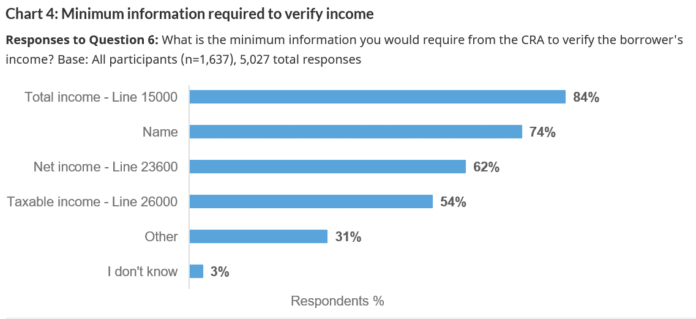The CRA held roundtables in late 2024 with mortgage industry associations, including banks, credit unions, insurers, brokers and alternative lenders, and received over 1,600 responses to an online questionnaire. This follows the federal government’s pledge in Budget 2024 to explore a CRA-led income verification tool as a way to crack down on mortgage fraud.
Participants consistently voiced concern about rising fraud, especially the use of fake or altered documents to inflate income.
“Participants were clear that a tool created by the CRA that allows mortgage professionals to verify the validity of a borrower’s income would streamline the mortgage approval process and reduce the risks of fraud significantly,” the CRA said in its report.
Industry wants real-time data, not yes/no answers
Sixty-nine per cent of industry members surveyed said they are aware of fraud trends in the mortgage space, citing falsified documentation as the most pressing issue. Other concerns included laundering funds through mortgage transactions, overstating income to qualify for larger loans, and fraud occurring from within the industry itself.
Lenders and brokers currently verify income using multiple sources, including employment letters, bank statements, and CRA-issued tax documents. Among the most commonly requested documents are T4 slips, notices of assessment, and proof of income statements. Some also request the borrower’s full T1 tax return, particularly when self-employment or rental income is involved.
“Participants confirmed that the current income verification process requires that brokers, lenders, underwriters, and insurers take multiple steps to verify a borrower’s identity and documents,” the report said.
The CRA noted that most industry professionals want access to real-time income data through an API or secure CRA portal, integrated with mortgage origination platforms. This, they said, would allow professionals to retrieve verified income information with the borrower’s consent, speeding up transactions and reducing manual processing.
According to the CRA, “The most common suggestion was to use a new or existing CRA portal that would allow mortgage professionals to obtain information with the borrower’s authorization.” Participants also stressed the need for a digital tool that aligns with the pace of mortgage origination, adding, “The response from the tool should be provided in real-time to be consistent with the industry’s digital solutions and speed of transactions.”
Many in the industry said a simple “yes” or “no” from the CRA wouldn’t cut it. Nearly half of respondents (47%) felt that kind of response wouldn’t give them the details they need to properly assess a borrower’s income.
“Participants explained that a yes/no validation of income would be insufficient because it lacks the detail required to adequately verify documents and have a full view of a borrower’s financial situation,” the report noted. Lenders also need to understand which sources contributed to total income, such as employment, business income, or government transfers, and whether the borrower has outstanding debts to the CRA.
CRA survey data shows that 84% of industry respondents said they would need a borrower’s total income (Line 15000), while 74% cited name, 62% net income (Line 23600), and 54% taxable income (Line 26000) as minimum requirements.
Some participants warned that even small inconsistencies could trigger a false “no” response. “The consequences of a false negative could be impactful,” the CRA said, adding that delays could jeopardize a home purchase and damage the relationship between borrower and broker.
Fraud costs high; support for paid model grows
Most participants said the tool should provide at least two years of income history, with some suggesting up to five years, especially for borrowers with variable or self-employment income. They also emphasized the importance of security safeguards, including two-factor authentication, borrower notifications, and audit mechanisms to detect unauthorized access.
To ensure accessibility, participants said the CRA must also consider borrowers without online accounts or who live in rural areas. “The tool’s accessibility should consider financial institutions with limited resources,” the report added, noting that smaller lenders may not be able to integrate directly and could require a standalone interface.
The CRA also explored cost and adoption issues. According to the report, “As noted by Mortgage Professionals Canada, ‘for every $1 lost to fraud it takes $4 for lenders to recoup.’”
Several participants said they already pay for third-party services and would be willing to contribute to the cost of a CRA tool, whether through a subscription, pay-per-use model, or annual access fee.
While some said they would not rely solely on CRA validation, preferring to continue verifying employment and supporting documents, they agreed that a centralized income verification system would become a widely used tool, especially if it could confirm the authenticity of tax documents and reduce turnaround times.
“The CRA has carefully reviewed participants’ feedback and will use it to inform decisions on the potential design and implementation of a new tool,” the agency said. It also plans to hear from borrowers next to make sure their needs and concerns are part of the process.
Visited 57 times, 57 visit(s) today
canada revenue agency cra CRA income verification income verification mortgage fraud mortgage professionals canada
Last modified: July 15, 2025
